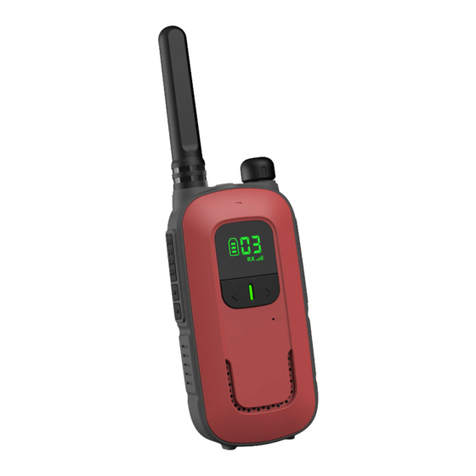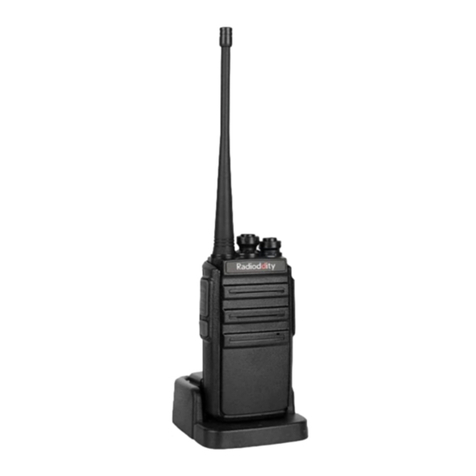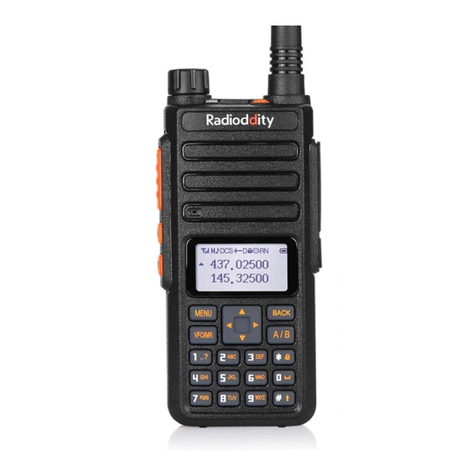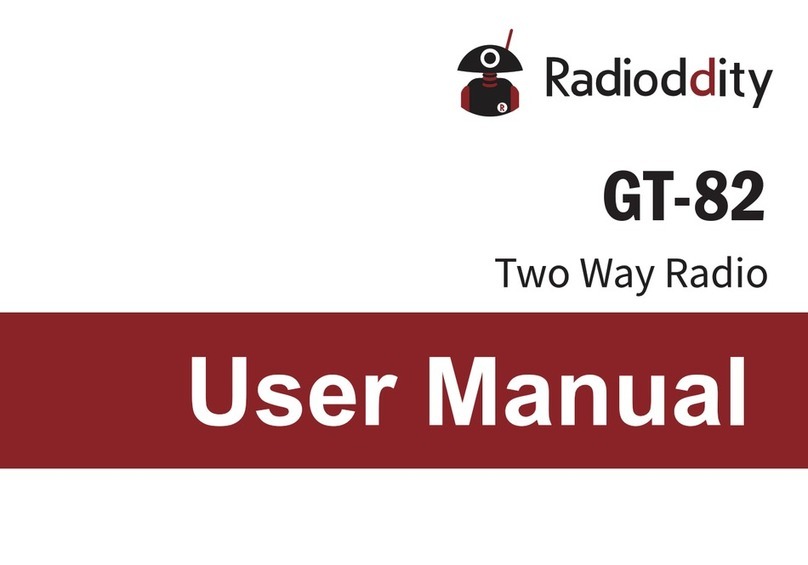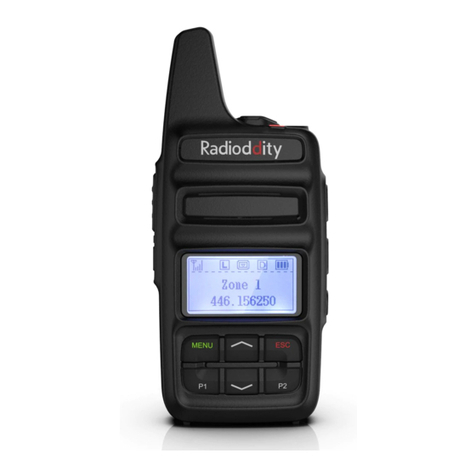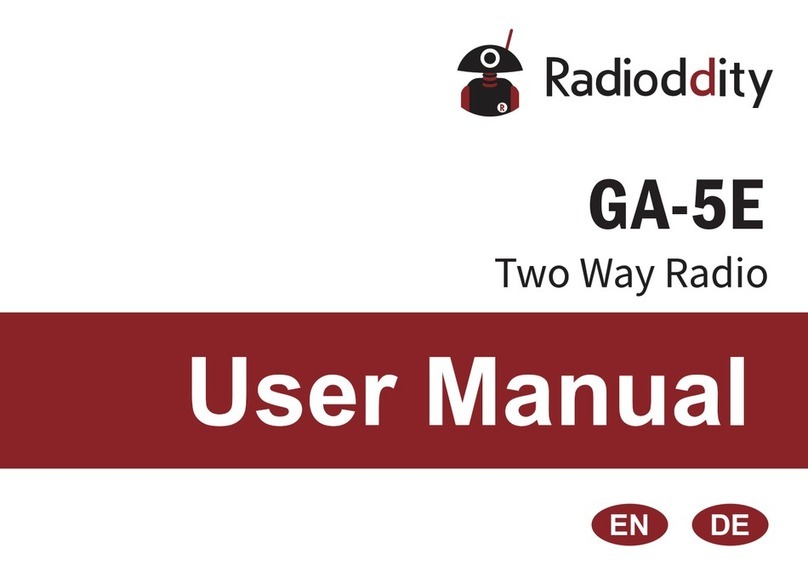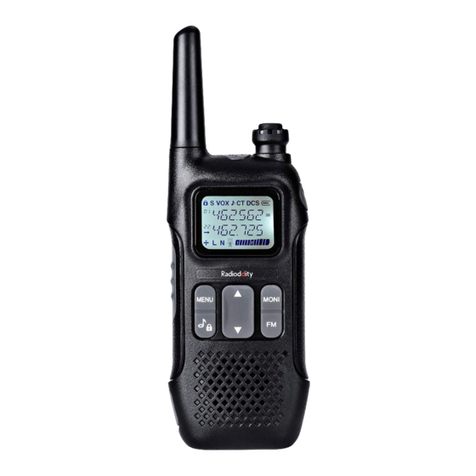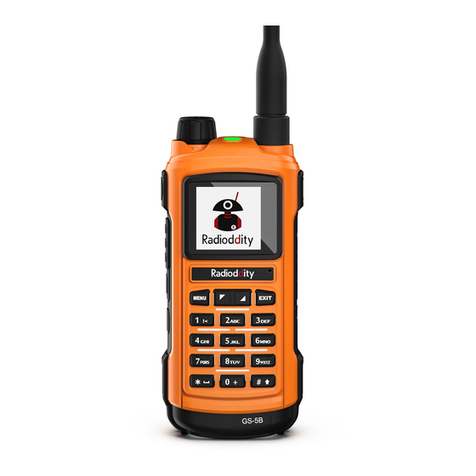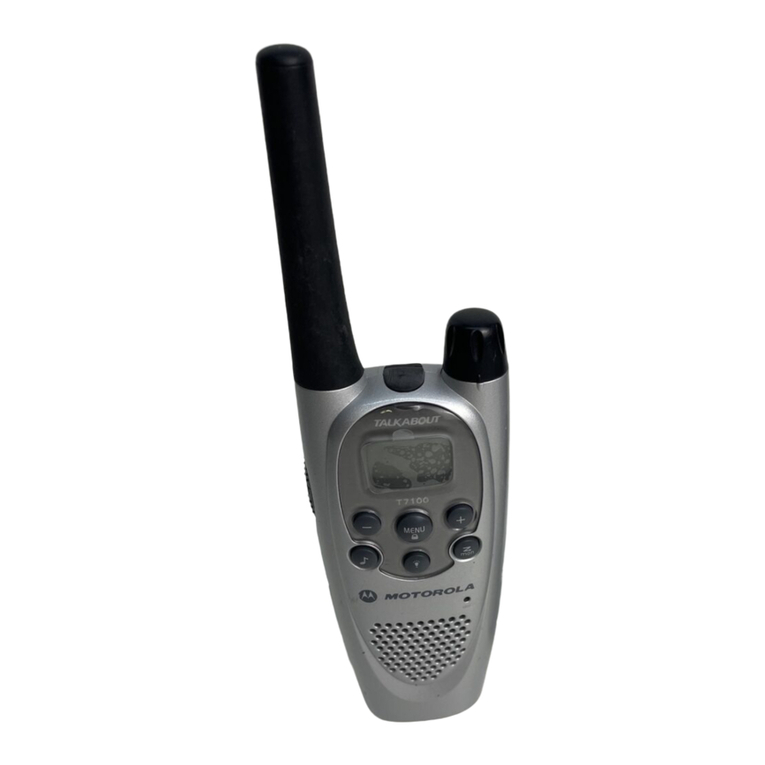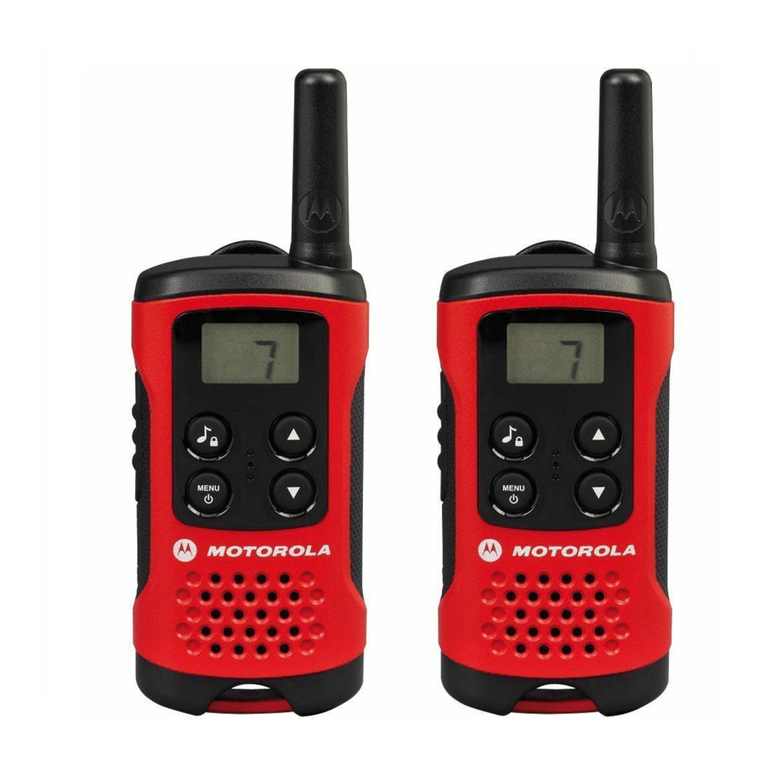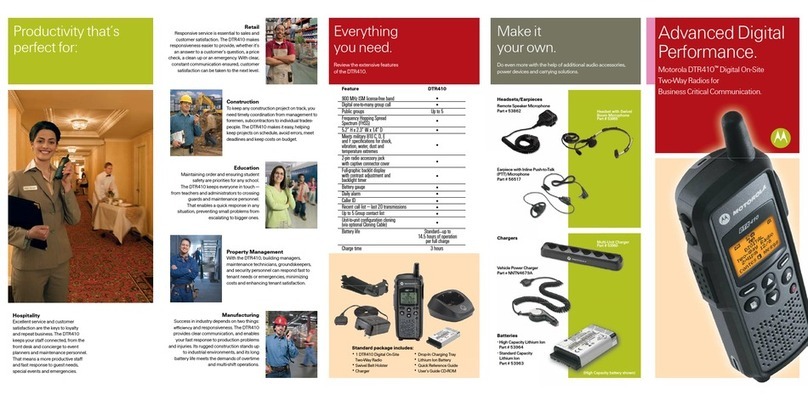
8
1) Press [ ] button once, it will turn on continuously (Always On mode) .
2) And then, press [ ] button once, the Strobe Light emits the emergency signal. (Strobe emergency mode).
3) And then, press [ ] button once, the light will be turned off.
Emergency Alert
The Emergency Alert feature can be used to signal members in your group for help. The emergency alarm
function is activated by menu operation.
To activate the emergency alert function, press and hold the [ ] button for 3 seconds. The radio will send out a
loud siren sound and the flashlight will flash.
Press the [ ] button to exit the emergency alert function.
WARNING: The Emergency Alert feature should only be used in the even of an actual emergency.
Using the Weather Radio/Scan Weather Channel
Your radio has a NOAA Weather Radio function, to enable the user to receive weather reports from designated
NOAA stations. Your radio also has a NOAA Weather Scan function, to enable the user to scan all 12 channels of the
NOAA Weather Radio. While using the Weather Radio, you are not able to receive FRS communications.
1) To turn the NOAA Weather Scan on, press and hold the [/MONI] button for 5 seconds while in FRS mode,
icon appears. The radio will go to Weather band mode and start scanning all 12 channels and stop on any
active channel. When the channel becomes inactive for 10 seconds the radio will resume scanning.
2) To stop the NOAA WEATHER (WX) SCAN and set the channel manually on the Weather band, press the [SCAN]
button during NOAA weather scan. The radio will stop scanning and the display will show the current Weather
band channel setting and the icon.
3) While in Weather band mode, press the [ /MENU] button, then press the [ ] or [ ]button to increase or
decrease the number to the desired weather channel, and press the [/MENU] button to confirm to select one
of the 12 NOAA weather band channels.
4) To exit the Weather Radio broadcast mode, press and hold [/MONI] button. icon disappears.
Menu Options
FRS Menu List


